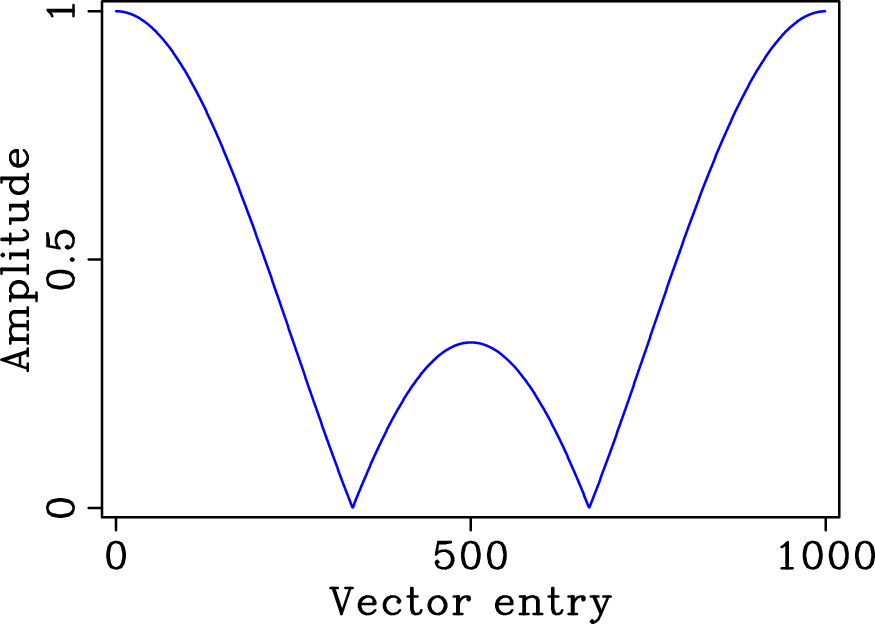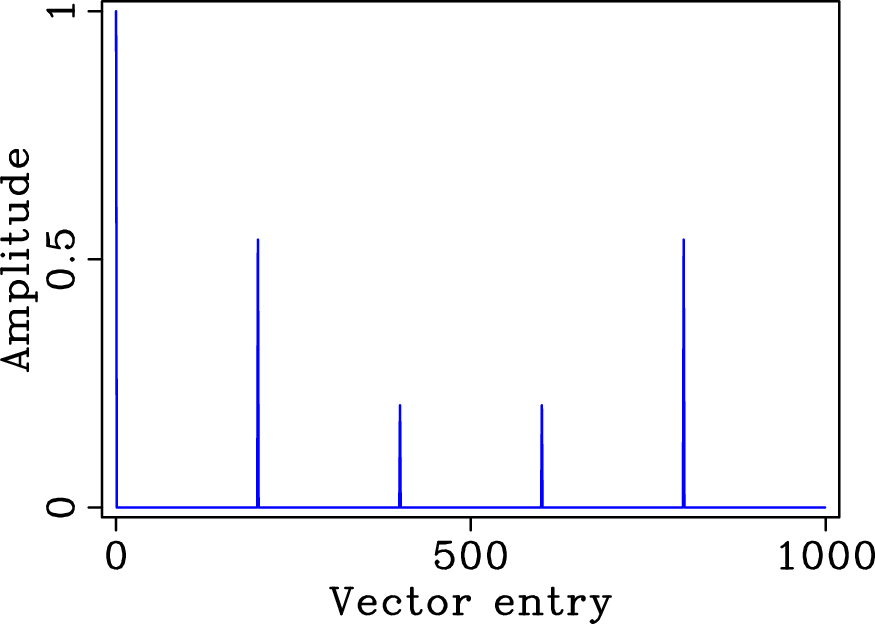|
|
|
|
Simply denoise: wavefield reconstruction via jittered undersampling |
 .
.



|
|---|
|
reg,sinc,res
Figure 4. Amplitude spectrum of (a) a five-fold ( |
|
|
The above expression corresponds to an elementwise multiplication of the periodic Fourier spectrum of the discrete regular sampling vector with a sinc function. This sinc function follows from the Fourier transform of the probability density function for the perturbation with respect to a point of the regularly decimated grid.
In Figure 4 the amplitudes for this
Fourier-domain multiplication are plotted for jittered undersampling
with ![]() and
and ![]() , i.e., on average four-out-of-five samples
are missing for a jitter that includes the decimated grid point, one
sample on the right and one sample on the left (cf. Figure
3, second row).
, i.e., on average four-out-of-five samples
are missing for a jitter that includes the decimated grid point, one
sample on the right and one sample on the left (cf. Figure
3, second row).
Equation 6 is a special case of the result for jittered
undersampling according to an arbitrary distribution introduced by
Leneman (1966) and further detailed in Appendix A.
Because these results were originally derived for the continuous case,
the above expression is approximate. In practice, however, this
formula proves to be accurate, an observation corroborated by
numerical results presented below. Consider the following cases for a
fixed undersampling factor ![]() .
.
|
|
|
|
Simply denoise: wavefield reconstruction via jittered undersampling |